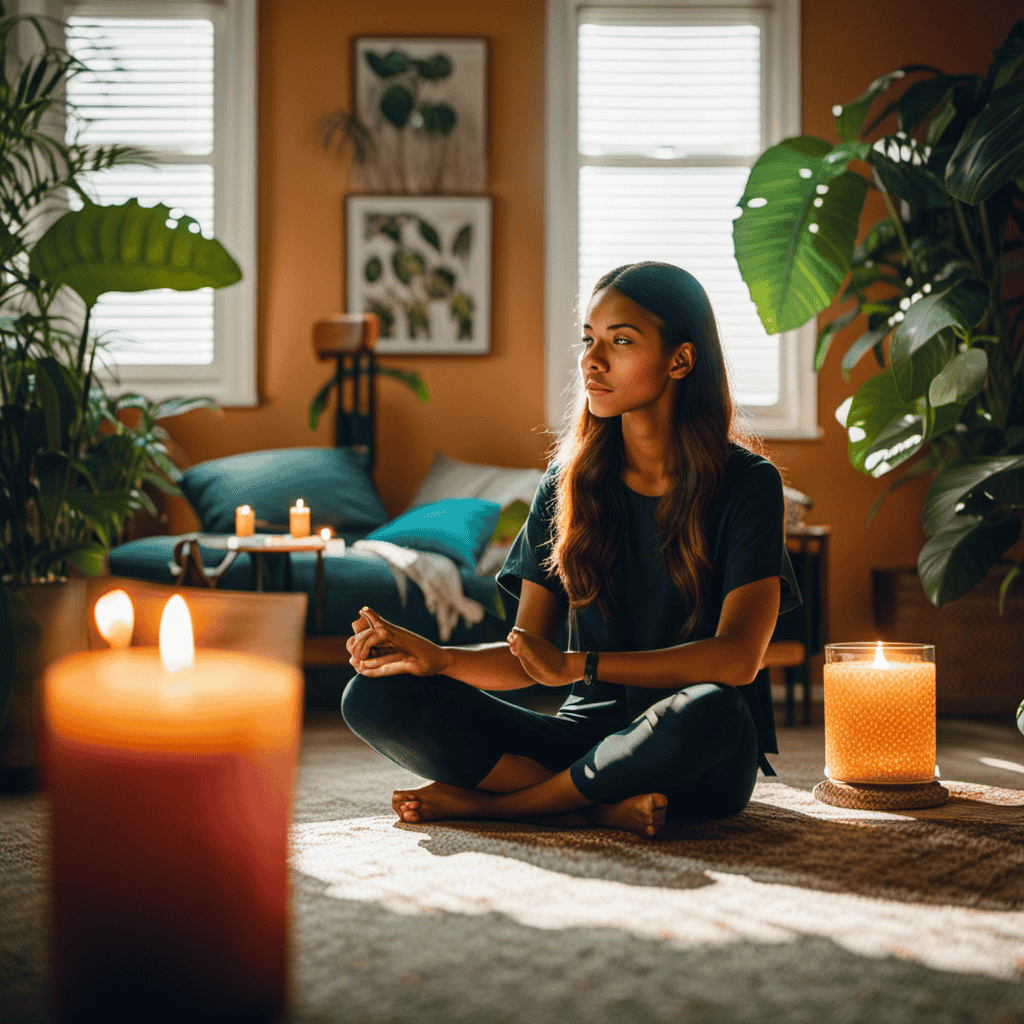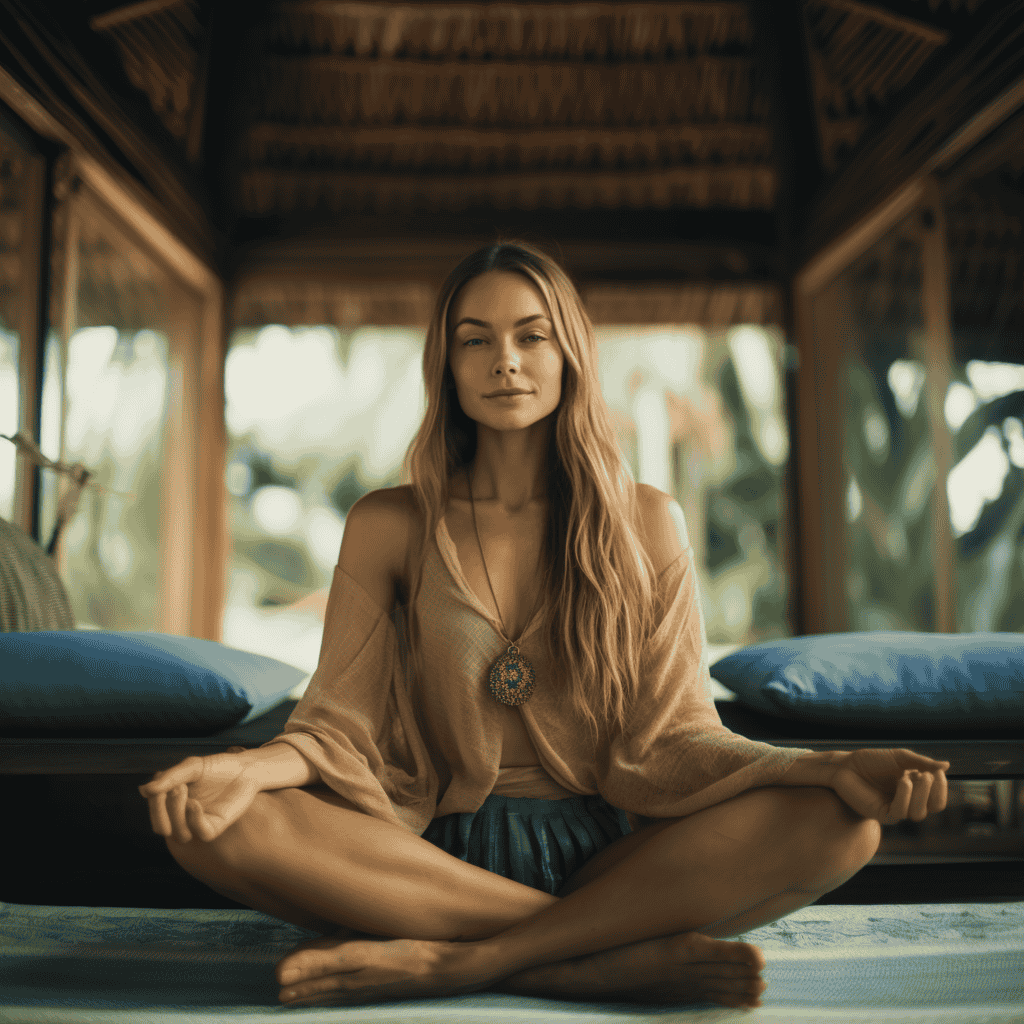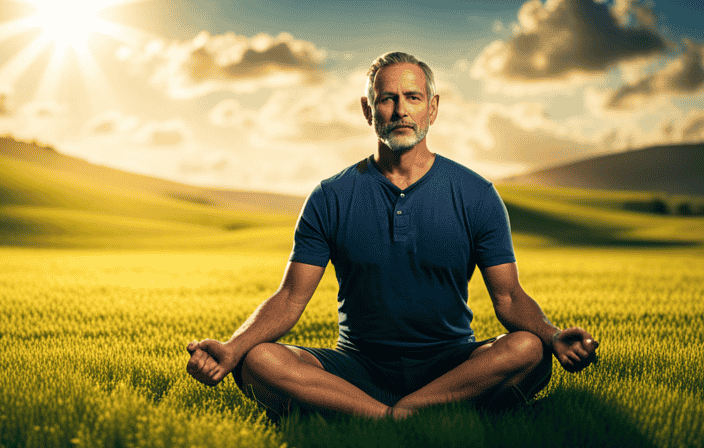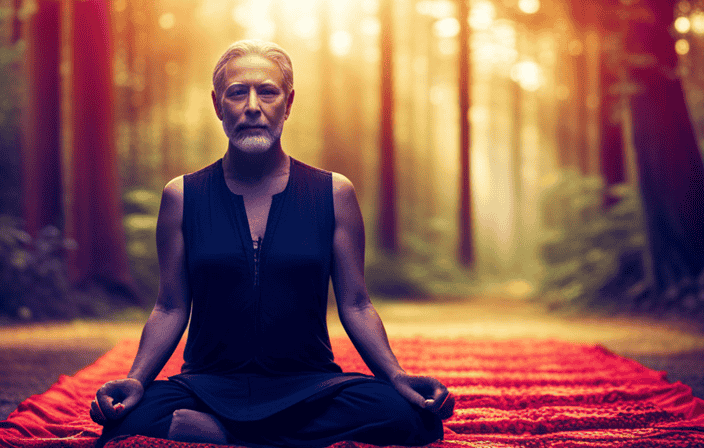Welcome to the complete handbook for becoming a pro at sitting still and meditating. If you’re ready to dive into the world of tranquility and mindfulness, this is the perfect place for you. Let’s explore the secrets of finding inner peace and focus through **seated meditation**!
In this insightful and practical article, we will explore the various positions, tips, and techniques to help you find comfort and enhance your practice.
Whether you’re a beginner or an experienced meditator, finding the right posture is crucial for a focused and relaxed meditation session.
So, let’s delve into the world of seated meditation and unlock the secrets to finding your perfect position.
Key Takeaways
- Experiment with different positions to find a natural and comfortable posture
- Use props like cushions or blankets for support if needed
- Relax the shoulders and keep the back straight while sitting
- Practice mindfulness techniques to make adjustments and enhance comfort during meditation
Finding the Right Position
I’ll experiment with different positions to find the one that feels natural and comfortable for me when practicing seated meditation.
It’s important to avoid common meditation posture mistakes, such as slouching or straining the body.
By exploring alternative meditation positions, I can discover what works best for my body and allows me to feel at ease and focused.
Some options to consider include sitting with legs crossed in a chair, using a cushion for support, or even trying the lotus position if it feels comfortable.
Each person’s body is unique, so it’s essential to find a posture that works for me.
With practice, seated postures can become effortless, and I can enhance my meditation practice by incorporating relaxation techniques like deep breathing and visualization.
Tips for Improving Posture
To improve posture during meditation, it’s important to sit up straight and relax the shoulders and neck. Finding a comfortable position is key to mastering the art of seated meditation. Start by sitting with your legs crossed or on a cushion, whichever feels natural and comfortable for you. Use a cushion or blanket for support if needed.
As you sit, bring awareness to your body and mindfully adjust your posture. Focus on keeping your back straight and shoulders relaxed, allowing the breath to flow freely. Remember to release tension with each breath, creating a sense of ease in the body.
By incorporating mindfulness into your posture, you can sit comfortably and cultivate a deeper meditation practice.
How to Sit Properly
Finding the right posture is essential for a successful meditation practice. Sitting properly allows for correct alignment and helps to maintain focus and relaxation. Here are some tips to help you sit properly during meditation:
- Sit with your back straight and tall, but not rigid.
- Relax your shoulders and let them drop down.
- Place your hands gently on your thighs or lap.
- Keep your feet flat on the floor to promote stability.
- Practice mindfulness techniques to bring awareness to your body and make adjustments as needed.
Having the correct posture during meditation not only supports your physical well-being but also enhances your ability to stay present and cultivate a calm and focused mind.
Remember, it may take some time and practice to find the posture that works best for you, so be patient and listen to your body.
Importance and Benefits of Comfort
Maintaining comfort during meditation is crucial for a relaxed and focused mind. Comfort and relaxation are key elements that allow us to fully immerse ourselves in the practice.
By finding a position that supports our body and avoids strain and discomfort, we can create the ideal environment for a successful meditation session. Whether it’s sitting with legs crossed on a cushion or in the lotus position, the goal is to find a posture that works best for our unique body. This allows us to feel comfortable and focused, enabling us to dive deeper into our practice.
Experimenting with different positions and using relaxation techniques, such as deep breathing and visualization, can further enhance our comfort and overall meditation experience.
Remember, a comfortable body leads to a calm and focused mind.
Enhancing Your Practice
By experimenting with different positions and relaxation techniques, I can enhance my meditation practice and deepen my focus.
One way to enhance my practice is by using props. I can try using a cushion or blanket for support, which can help me maintain a comfortable and relaxed posture.
Another way to enhance my practice is by incorporating mindfulness. I can bring my attention to the present moment and observe my thoughts and sensations without judgment. This can help me stay focused and cultivate a sense of inner calm.
By incorporating mindfulness into my seated meditation practice and using props for support, I can create a more comfortable and supportive environment for deepening my practice and experiencing the benefits of meditation.
Frequently Asked Questions
How long should I meditate each day to see results?
To see results from meditation, it’s important to establish a regular practice. Start with just a few minutes each day and gradually increase the duration. Consistency is key. Regular meditation techniques can provide numerous benefits for your mind, body, and overall well-being.
Can I meditate lying down instead of sitting?
Sure, you can meditate lying down, but it’s not the ideal posture. Sitting has many benefits, such as keeping you alert and focused. The right meditating posture can help you relax and avoid discomfort.
Should I close my eyes or keep them open during meditation?
Keeping eyes open during meditation allows for increased focus and awareness of the present moment. However, closing the eyes can help to minimize distractions and promote a deeper sense of relaxation. Experiment with both options to find what works best for you.
Is it normal to experience discomfort or pain while meditating?
Meditation can sometimes be uncomfortable, like a thorny path on our journey. However, by managing physical discomfort and exploring different positions, we can find the perfect seat that supports our practice and leads us to inner peace.
How do I deal with distractions and wandering thoughts during meditation?
To deal with distractions and maintain focus during meditation, I find it helpful to acknowledge the thoughts without judgment and gently bring my attention back to my breath or chosen focal point. Consistency and patience are key.
Conclusion
In conclusion, mastering the art of seated meditation is a journey of self-discovery and inner peace. By finding the right position and improving our posture, we create a foundation for a more focused practice.
Just like a tree with deep roots, our comfortable and supportive posture allows us to grow taller and reach new heights in our meditation.
As we connect with our body and find the position that feels like home, we unlock the door to a world of tranquility and mindfulness.
So, let’s plant ourselves firmly in the present moment and let our practice blossom like a vibrant garden.










